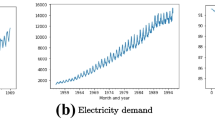Abstract
The online Dynamic Weather Forecaster is an open, collaborative application available now to high-school and college instructors across the United States who would like to easily incorporate weather forecasting in their instruction. The application consists of a set of 13 questions that allow students to submit forecasts that cover most of the parameters used by professional weather forecasters. Submissions are automatically validated against weather parameters and graded. We tested the impact of the application on the learning of 199 undergraduate students in an introductory meteorology course in spring 2008. Students who begin forecasting early in the semester and continue to do so throughout the semester are statistically significantly more successful in the course than students who start late or complete a low number of forecasts. College, year in school, and gender were not significant predictors of success. Students found the application easy to use, and 92.3% of them found it at least somewhat helpful as they learned about the weather. Through the use of the DWF, students also experience first-hand that uncertainty is a critical part of weather forecasting and of scientific studies in general. With sufficient interest from potential users outside the USA, the DWF platform could easily be expanded to include global weather data.


Similar content being viewed by others
References
Anand V (2007) A study of time management: the correlation between video game usage and academic performance markers. Cyberpsychol Behav 10:552–559
Bond NA, Mass CF (2009) Development of skill by students enrolled in a weather forecasting laboratory. Weather Forecast 24:1141–1148
Cervato C, Gallus WA, Boysen P, Larsen M (2009) Today’s forecast: higher thinking with a chance of conceptual growth. EOS 90(20):175–176
Hilliker J (2008) Assessment of a weather forecasting contest in multi-leveled meteorology classes. J Geosci Educ 56:160–165
Kahl JDW (2001) Meteorology online: weather forecasting using the Internet. Sci Teach 68:22–25
Kahl JDW, Horwitz KA, Berg CA, Gruhl MC (2004) The quest for the perfect weather forecaster. Sci Scope 27:24–27
Kahl JDW, Berg C, Gruhl M, Tennessen T (2005) Acid thunder and world wide weather. Earth Sci 21:4–9
Knox JA (2000) L. F. Richardson’s “Forecast Factory”: a great idea for teaching weather forecasting. J Geosci Educ 48:579–580
Knox JA, Ackerman SA (2004). What should we teach in introductory meteorology? Let’s ask the students!, Preprints, 13th Conf. on Education, Amer. Meteor. Soc., Seattle, WA, January, 4.1, CD-ROM
National Research Council (ed) (1996) National science education standards. National Academy Press, Washington
Odell PM, Korgen KO, Schumacher P, Delucchi M (2004) Internet use among female and male college students. Cyberpsychol Behav 3(5):855–862
Piaget J (1963) The origins of intelligence in children. Norton, New York
Severiens S, Ten Dam GTM (1994) Gender differences in learning styles: a narrative review and quantitative meta-analysis. High Educ 27:487–501
Vermunt JD (1998) The regulation of constructive learning processes. Br J Educ Psychol 68:149–171
Vislocky RL, Fritsch JM (1998) Performance of an advanced MOS system in the 1996–97 National Collegiate Weather Forecasting Contest. Bull Am Meteorol Soc 78(12):2851–2857
Yarger D, Gallus W, Taber M, Boysen P, Castleberry P (2000) A forecasting activity for a large introductory meteorology course. Bull Am Meteorol Soc 81:31–39
Acknowledgments
We thank Chris Schaffer, Daryl Herzmann, Scott Lincoln, and Doug Yarger for their assistance with this study. Cervato also wishes to thank the ISU undergraduate meteorology juniors who since 2002 shared their passion for forecasting with the students of Meteorology 206: Brandon Storm, Wes Sass, Kevin Sullivan, Matt Grewe, Heather Moser, Chris Conoan, Liz Suess, and Josh Alland. Comments kindly provided by two anonymous reviewers and editor Hassan Babaie have helped us improve the manuscript. Partial support for this work was provided by the U.S. National Science Foundation (DUE-0618686).
Author information
Authors and Affiliations
Corresponding author
Additional information
Communicated by: R. Ramachandran
Appendix: snapshots of the screens used to set-up a DWF assignment
Appendix: snapshots of the screens used to set-up a DWF assignment
Rights and permissions
About this article
Cite this article
Cervato, C., Gallus, W., Boysen, P. et al. Dynamic weather forecaster: results of the testing of a collaborative, on-line educational platform for weather forecasting. Earth Sci Inform 4, 181–189 (2011). https://doi.org/10.1007/s12145-011-0087-2
Received:
Accepted:
Published:
Issue Date:
DOI: https://doi.org/10.1007/s12145-011-0087-2







